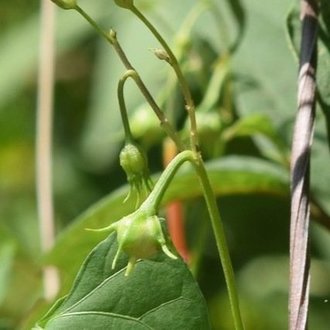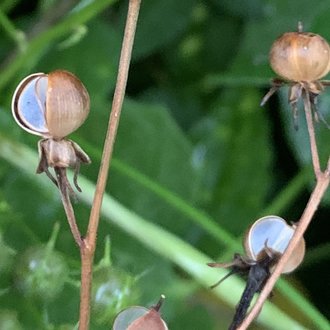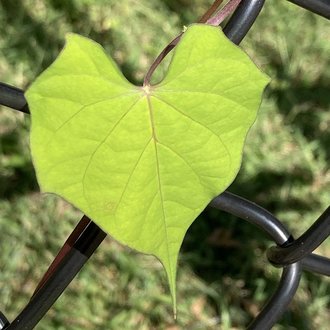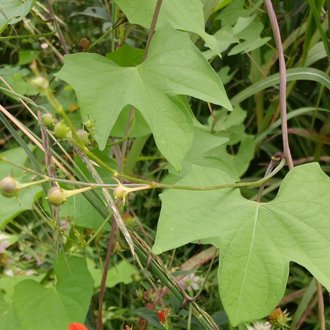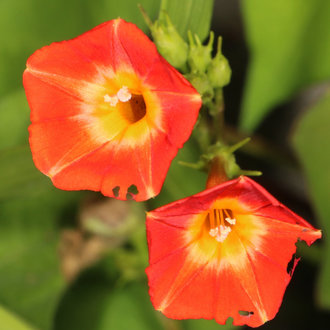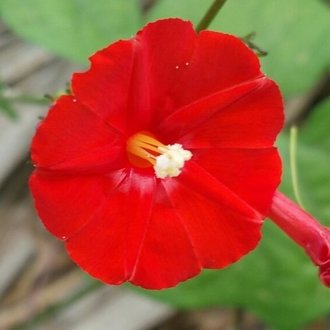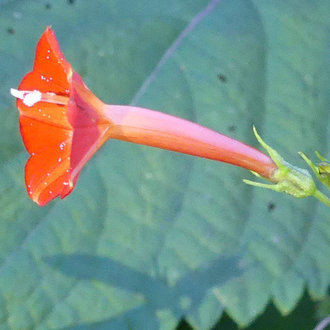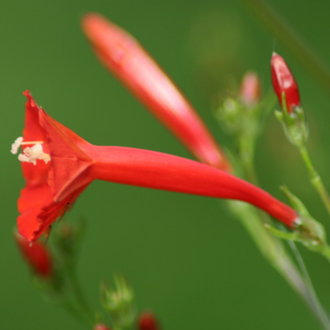Redstar vs Scarlet Creeper
These two species are easily confused where their ranges overlap. They are best distinguished by whether their fruiting pedicels curve. They have differences in flower color and leaf shape as well, but variability can make these characteristics less reliable. I. coccinea is more likely to occur in disturbed and anthropogenic habitats, whereas I. hederifolia is more likely in wild forests, but both can co-occur in the same environments.
Redstar (Ipomoea coccinea) | Scarlet Creeper (Ipomoea hederifolia) |
An annual vine native to northern Mexico, which has expanded its range northeast into much of eastern North America. | An annual vine native to the southeastern U.S. into Mexico. |
Fruit pedicels strongly recurved when fruit is ripe, often long before it is fully ripe. Photo © skitterbug, CC BY 4.0. | Fruit attached on straight pedicels. Photo © Teri, CC BY-SA 4.0. |
Leaves may be unlobed, but are often irregular lobed or having several angles, but lobes are mostly limited towards the half of the leaf close to the base, and are usually not deeply-cut. Photo © hurlbert, Public Domain. | Leaves may be unlobed, but often have three well-defined, relatively deeply-cut lobes towards the tip. Photo © Ryan Watson, CC BY 4.0. |
Flowers average a more orangeish-red, usually with a more distinct yellow center. Flowers average slightly smaller and are usually more pentagonal, with straighter borders. Photo © Judy Gallagher, CC BY 4.0. | Flowers average a deeper scarlet color. Center may be orange or yellowish, but yellow is less likely and usually less extensive. Flowers average slightly larger and are usually more rounded around the edge. Photo © AJ Wacaser, CC BY 4.0. |
Inner sepals (green leaf-like structures at the base of each flower) usually longer (4-6mm). Photo © Allen Browne, CC BY 4.0. | Inner sepals usually shorter (3-4mm). Photo © luispauperrimo, CC BY 4.0. |
References & External Resources
These short lists show only links helpful for ID. For a complete list of references and resources also covering other aspects of ecology, visit the links section of the full article on each plant, which is the first entry here.



